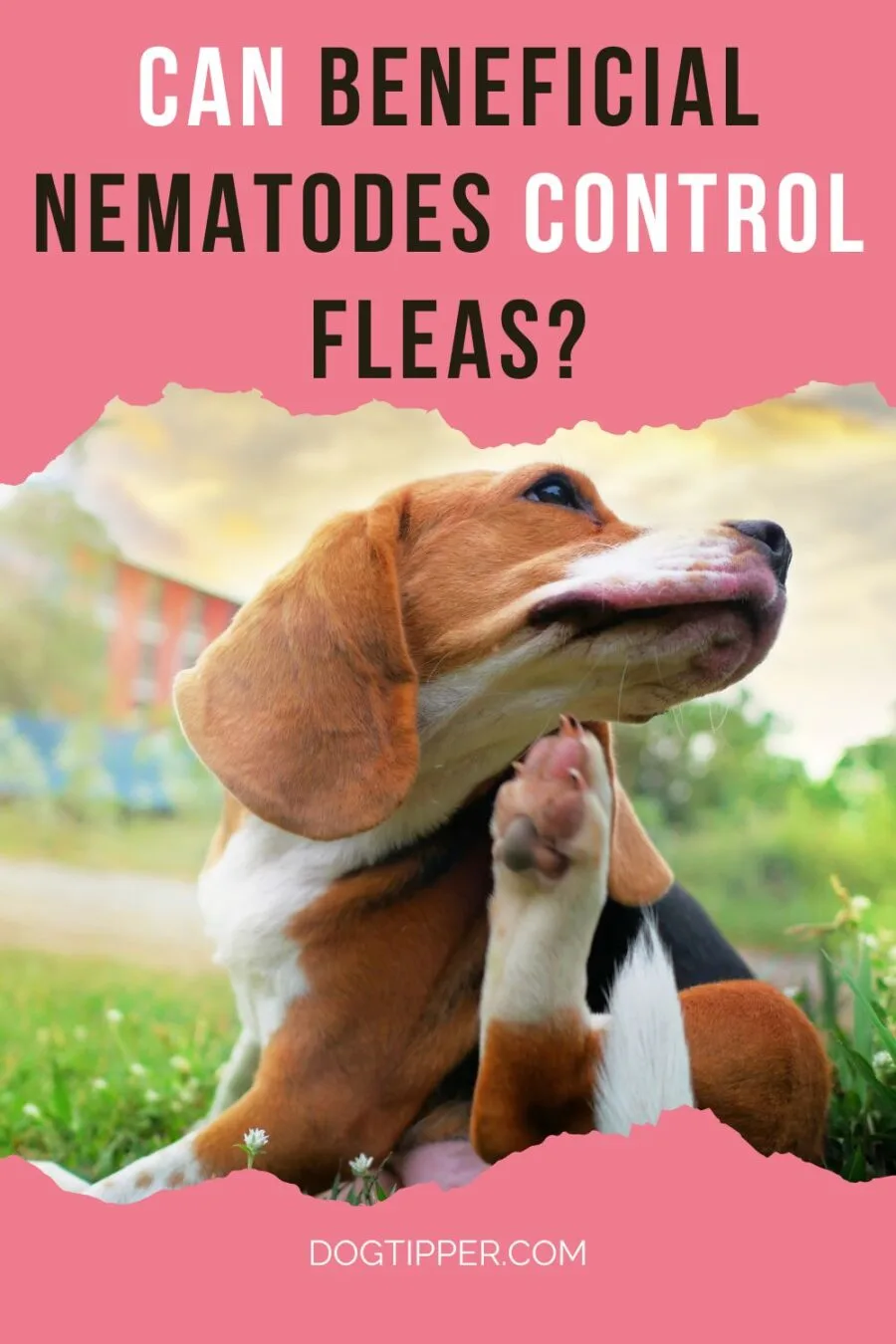We’re always looking for organic ways to control pests in our yard and home. Fleas are an especially troublesome warm weather problem but we use beneficial nematodes for fleas. These microscopic worms are safe for your family and your pets but kill fleas (as well as weevils, cranefly, grubs, corn borers, and other bugs that dine on vegetable gardens.)

What are beneficial nematodes?
Beneficial nematodes are microscopic, worm-like organisms that live in the soil. They are called “beneficial” because they can help control pests in the soil, such as grubs, weevils, and cutworms. There are many different species of beneficial nematodes, but the most commonly used species is called Steinernema feltiae.
Beneficial nematodes are natural predators of soil-dwelling pests. They enter the pest’s body through natural openings, such as the mouth or anus, and release bacteria that kill the pest within 24-48 hours.
The nematodes then feed on the dead pest and reproduce, creating a new generation of nematodes that can continue to control pests in the soil.
Beneficial nematodes do not leave behind any harmful residues. They are often used as an alternative to chemical pesticides and can be a valuable tool in integrated pest management programs.
How Do You Purchase Nematodes?
The nematodes are microscopic so you won’t see them; you’ll purchase them on a small sponge. This sponge contacts about one million live nematodes, enough for about 3,000 square feet of yard space.
We purchased the nematodes at our local garden store. Nematodes are also sold online (they’ll be shipped in an insulated box with dry ice then you’ll refrigerate upon receipt).
Once purchased, the sponge containing the nematodes has to be handled carefully. It can’t be exposed to sunlight and should be refrigerated until it is used. You can purchase the nematodes up to about seven days prior to application on your yard.
How to Apply to Your Yard
Remember, beneficial nematodes are living organisms, so handle them with care and follow the instructions carefully to ensure their effectiveness. That means taking a few pre-application steps.
Choose the right time
Beneficial nematodes are most effective when the soil temperature is between 50-90°F (10-32°C), so choose a time when the soil is warm enough to support them. For us during the Texas summer, means early morning or late evening.
Prepare the soil
Before applying the nematodes, water the soil thoroughly to ensure it is moist. This will help the nematodes move through the soil more easily. You can also aerate the soil to improve drainage.
Prepare the nematodes
To apply, soak the sponge in about a gallon of room temperature water, taking the sponge out and soaking it completely (rinse the bag in the water, too, in case any of the micro critters are attached to the inside of the bag.) ;
Stretch the sponge, stretch it, squeeze it…basically try to get everything you can out of the sponge.
Apply the nematodes
Follow the instructions on the package to determine how much nematode solution to apply per square foot. You can apply the solution using a watering can or a sprayer. Again–be sure to apply the nematodes in the early morning or late afternoon when the sun is not too strong.
We used a sprayer on our hose to apply the nematodes to the yard, spraying the soil.
Water the soil again
After applying the nematodes, water the soil again to help them move through the soil and reach their target pests.
Monitor the results
It may take a few weeks to see the effects of the beneficial nematodes, but you should notice a decrease in pest activity over time. If fleas return, reapply in about eight weeks.
We’ve used nematodes the past several summers and had excellent results, helping keep our dogs flea free!
More Garden and Yard Posts You Might Like
10 Toxic Plants to Remove from Your Dog’s Yard
The Ultimate Guide to Creating a Dog-Friendly Backyard
Using Diatomaceous Earth to Control Fleas
Pin it to remember!

- Taking Your Dog to See Santa: Tips for a Jolly Visit! - December 7, 2023
- The Pug Dog Price Tag: What You Need to Know Before You Get Your Pug - September 7, 2022
- National Microchipping Month {How it might save your dog’s life} - May 23, 2022
